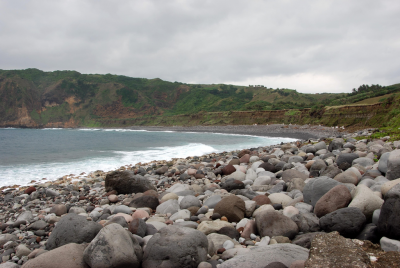
|
When stone, pebbles and small rocks are deposited along the coast, they create a porous layer that is not as tightly packed together as sand is. These are shingle beaches. Common to New Zealand, Japan and the United Kingdom, shingle beaches support little vegetation and mostly have lichen-covered rocks. |
The term shingle beach refers to a beach along any body of water that is made up of stones, pebbles, and other small rocks. These materials, also known as shingles, may vary in size from 2 to 200 millimeters and can also be mixed with other sediments, like sand or silt. Shingle beaches are primarily characterized by a steep profile, which means the area further inland sits at a higher elevation than the section of the beach found along the water. These beaches are located along a number of geological formations, including spits, barrier islands, and pocket beaches. Since the stones and pebbles that make up these beaches do not fit tightly together, they create a rather porous environment. These large pores prevent the beach from retaining any significant amount of water, although they also prevent evaporation in the soil below. Many shingle beaches can be found in New Zealand, Japan, and the United Kingdom.
Geologists have linked the formation of many shingle beaches to areas around the world that were subjected to glaciation during the Pleistocene era. These areas tend to be located at higher latitudes, and glaciers brought with them rocks and pebbles that were deposited on the shorelines. Sometimes the rocks and pebbles on shingle beaches are deposited by rivers that empty into the ocean. Additionally, shingle beaches may be formed from intense wave activity that erodes larger pieces of rock located further inland. Over time, continued wave activity carries these large pieces of sediment onto the shores, depositing the biggest pieces further from the water and at higher elevations. The composition of these beaches works to decrease the strength of the tide as it moves back out to the ocean.
Credit: World Atlas
Picture Credit : Google




